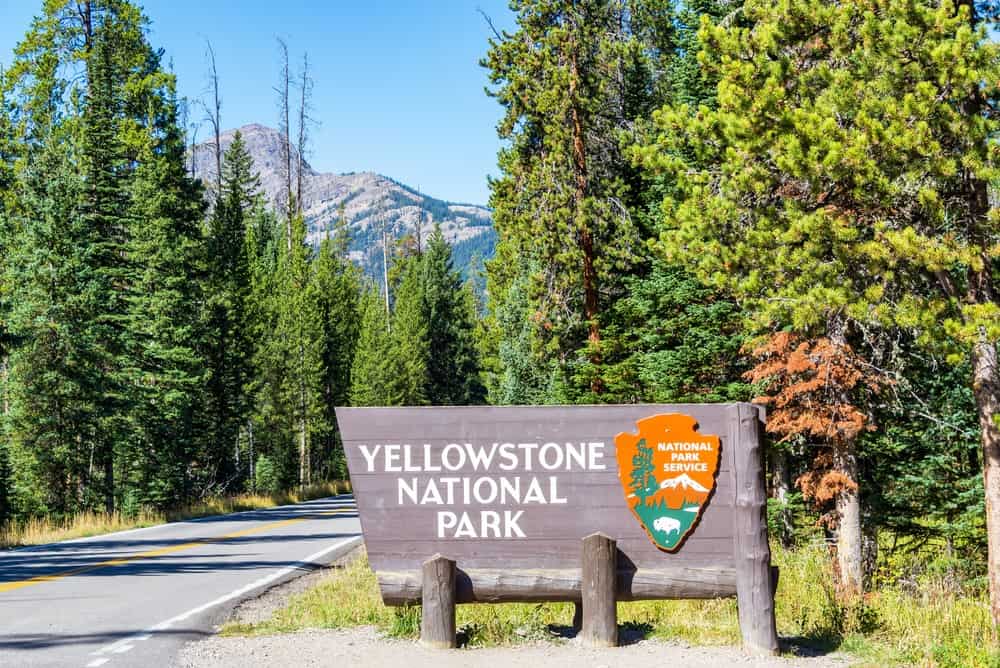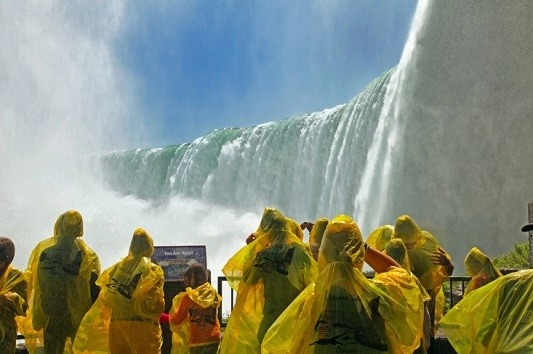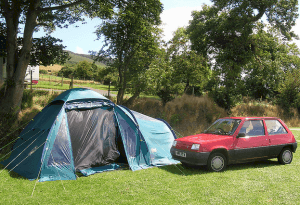Last Updated on October 10, 2024 by Aswetravel
7 natural wonders of the world – After intense competition and much campaigning, seven unique and intriguing monuments were chosen. Each is spectacular in its own right, and each draws millions of visitors every year. Nonetheless, being named to the new Wonders of the World list brings each the attention it deserves and helps to ensure preservation for the future. Visiting any of these stunning destinations could be a part of the trip of a lifetime. If you’re looking for a life-changing travel experience, we suggest you give one of these destinations a visit:
7 Natural Wonders of the World
The seven wonders of the world are the most famous natural wonders in the world. These sites have been recognized as being among the greatest achievements of human civilization. The Seven Natural Wonders of the World are seven natural phenomena that have been recognized by people around the world as being of exceptional beauty and interest.
When we look up in awe at the night sky, wonder at the great oceans and rivers, or gaze in wonder at some amazing creature — perhaps a tiger, an elephant or a whale — then we feel the same emotions as our ancestors did when they looked out over these wonders in ancient times. We can understand why it is said that “to behold nature is to rediscover man.” In this day and age, many people do not believe that anything extraordinary exists anymore. However, there is something magical about those places where the hand of mankind seems not to have touched. It is here that we find the seven natural wonders of the world.
The seven wonders of the world

Great Wall of China
Though an impressive engineering feat, only educated guesses can be offered regarding the “Great Wall’s” actual length. That’s because it’s not a continuous structure, and many different iterations were created at various times. One of the Seven Wonders of the Ancient World, the wall stretches along a 1,400 km long section of northern China’s Loess Plateau. Built during the Qin dynasty between the 3rd and 2nd centuries BCE, the wall runs through Gansu, Shaanxi, Ningxia, Inner Mongolia, Shanxi, Jilin and Liaoning provinces before terminating south of Dalian Bay.

Perhaps the most rewarding section to visit is outside of Beijing and is called Juyong Guan. In fact, Beijing makes an ideal home base for exploration of the region.
Mount Everest
Mount Everest is a peak in the Himalayas, located on the border between Tibet and Nepal. It lies south-east of Mount Lhotse, at the southern end of the Nepalese section of the Himalaya Range. Its summit rises from the floor of the Khumbu Glacier, which flows down to the Dudh Kosi River on the Tibetan side of the divide. This makes it one of the highest peaks worldwide outside Antarctica. At a height of over 29,000 feet, Mount Everest is almost as high above sea level as commercial aircraft fly. As of 2022, more than 300 climbers have died attempting to reach the summit of Everest most of the bodies remain on the mountain.
Niagara Falls
Niagara Falls is a natural wonder that has been around since the geologic past. The park provides opportunities for outdoor activities and many other things to visitors. It also gives them an opportunity to see nature at its best through these amazing waterfalls. There are three different types of waterfalls located here: falls, plunge pools and cascade pools. These types of waterfalls flow from high peaks into low valleys where their waters form into spectacular plumes or plunges. This type of waterfall is called as cascades because they look like a series of small waterfalls flowing down from one peak to another. You can go there by plane or car but if you prefer traveling on foot then you will have to get there by hiking. The area is full of wildlife including wolves. Visitors should wear appropriate shoes when going outdoors so they won’t be injured by sharp rocks. All the animals are wild and should not be approached. Hiking in this region is very good and safe.
The Grand Canyon
Very famous and important feature of North America is the Grand Canyon. Located in Arizona, USA, the canyon cuts through layers of limestone and sandstone in an area of 6 million acres. There is a total height difference of between 1 mile , or 2 miles . Some parts of the canyon reach depths of 3,000 feet or more, while others may dip to just 5 feet. At the bottom of the Grand Canyon is Lake Powell, which is created from water runoff during periods of heavy rainfalls. Much of this water then enters the lake via tributaries such as the Colorado River. The river itself originates at nearby Lake Mead; another large reservoir which lies higher up the drainage system. Together they make up what is called ‘the lower basin’ of the Grand Canyon. The second part of the canyon consists of Havasu Canyon, which connects to Vermilion Cliffs. Finally, the largest gorge, the ‘upper gorge’, forms the final part, where the Colorado River exits the canyon near the town of Lee’s Ferry.
Grand Canyon National Park, often considered one of the “Wonders of the World,” was officially designated a national park in1919. At 277 miles long and reaching a depth of over 6,000 feet, it’s hard to really gauge the scale of the Grand Canyon’s incredible rock formation. The Colorado River has carved out the Grand Canyon over a period of two billion years.
Machu Picchu, Peru
From a hotel in conveniently located Cusco, visitors travel by foot or train to ancient Incan ruins of a profound sacred site. May and September are considered excellent travel months because of light crowds and mild weather.

If you love the outdoors, Machu Picchu is a hikers dream destination, there are many trails you can walk including the well-known Inca Trail.
Yellowstone National Park
Yellowstone National Park is located in Wyoming, USA. The park has an area of 1,338 km . It is the oldest and largest national park in the United States and also one of the most visited parks. Yellowstone was established as a U.S. national park in 1872 by then-president Ulysses S. Grant. As the first national park to be created was Yellowstone, which is located in the state of Wyoming, USA. It was established on March 1st 1872 under the name ‘Grand Canyon’. This was at the same time as Niagara Falls and Yosemite National Park.
The world’s first national park, Yellowstone was created to protect America’s first great natural wonder – Yellowstone Valley’s geysers, hot springs, lakes and waterfalls. For more than 100 years it served that purpose beautifully. And even today it remains a place of wonder for all who visit. But now things are changing. The wolves that once migrated through and around Yellowstone are being shot by hunters. Some visitors complain about the growing crowds at some of our popular attractions. And while these changes have been good for tourism and wildlife management, they put increasing pressure on the park’s resources. So we decided to learn how smart technology can help preserve this special place for generations to come.
Great Barrier Reef
The Great Barrier Reef Marine Park covers an area larger than England and Wales combined. The world’s largest coral reef system sits off the coast of Australia and spans approximately 2,300 kilometers – making it roughly three times the size of Texas. While millions of people visit the Great Barrier Reef each year. This means that many locals are concerned that development could negatively impact their way of life, but even so, they understand the economic value of what makes these waters unique and something worth protecting.
Wonders of the World
This labor of love by Shah Jahan to his beloved wife has magnificently stood the test of time. The Taj Mahal is an architectural marvel, and experts suggest visiting between November and February for the most comfortable weather.

Most people find accommodations in nearby Agra, but there is also a hotel just outside the eastern gate of the monument.
Chichen Itza, Mexico
The ruins of this ancient Mayan city are glorious to behold. With pyramids, temples and plazas to explore, it’s easy to spend the day.

Mexico has much to offer, Chichen Itza being just a small part of it, there’s many places to stay in the area or even just a road trip away. he high season is October through April when the weather is favorable.
Christ the Redeemer, Brazil
This imposing figure perched atop Corcovado Mountain and overlooking Rio de Janeiro is an impressive sight. September and October offer optimal conditions for visiting.

An afternoon viewing of the world famous Christ the Redeemer statue is considered ideal because of the sun’s location. It’s easy to get to the statue from any hotel in Rio and don’t forget to stretch out your arms for a photo op!
The Colosseum, Italy
Construction on Rome’s most iconic landmark was begun in 70 AD, and the structure was in use for approximately 500 years. Known for bloody battles between gladiators, the building could hold 50,000 spectators.

Today the Colosseum is a ruin, but still one of the biggest attractions of this country. The summer season is the busiest, so most people prefer spring and fall visits. Rome is packed with great hotels that make visiting here a breeze.
Petra, Jordan
Jordan’s ancient capital was established in 9 B.C.E. Many of its structures were impressively carved into rock walls. Spring and fall promise the most comfortable weather in Petra.

Some visitors choose to stay in a nearby Bedouin camp for an authentic experience. Most hotels in the area offer free transport to Petra. Which of these 7 New Wonders of the World destinations is the highest on your travel bucket list?
Badlands National Park Camping
Things to Do in Badlands National Park




